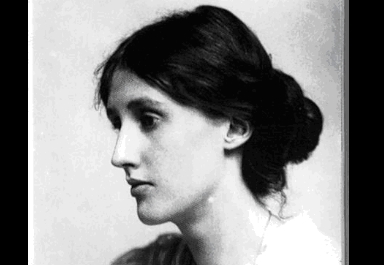
Mrs. Dalloway is the first modernist successful novel written by Virginia Woolf. It was written in 1925 and takes place on a single day, a day of June 1923, in London. It is centered around the character of Clarissa Dalloway, a woman married with Richard, a member of the Parliament. Mrs. Dalloway is going to give a party in the evening.
The novel starts in the morning, when she goes out in Bond Street to buy some flowers, and ends when the party is finishing, around midnight. While she is in the flower shop, a car pass noisily in the street and shifts her attention to the place where Septimus Warren and his wife Lucrezia, a girl of Italian origin, are walking. Septimus works in an estate agency. He's been shell-shocked by world war's bombardments and many doctors have been called to deal with his mental disorder: first Doctor Holmes and then William Bradshaw, a famous nerve specialist. Clarissa goes back home and receives an unexpected visit from Peter Walsh, the man she loved when she was young. After the visit, Peter goes to Regent's Park, and there he meets Septimus and Lucrezia that are going to the doctor for an interview. The interview lasts three quarter of an hour and at the end doctor Bradshaw decides that Septimus has to go to one of his clinics. At six p.m. Septimus jumps out of the window of his room and the ambulance, carrying him at the hospital, passes near Peter Walsh. At the party Mrs. Dalloway hears from doctor Bradshaw about Septimus' suicide and she feels sympathetic with him, though she doesn't know him.
In this novel, the events are not important in themselves. What is important is the impression they made on the characters who experienced them. With this novel Virginia Woolf wanted to show "the sane and the insane". Mrs. Dalloway is apparently the sane: she belongs to the upper class and she is married with a member of the Parliament. She is rich, she has a lot of friends and a sweet, delightful home. On the other side Septimus Warren seems to be the insane: he is mentally ill and he retires from the world. Anyway they have something in common: both of them want to keep their deepest feelings and thoughts inside. Septimus arose from the world because he doesn't want the doctor to know his inner feelings. Clarissa has retired from the world too: as a young woman she has refused to marry the man she loved, Peter Walsh, because he would expect to share the secrets of her soul, while Clarissa wanted to keep them hidden. So she married a man too busy to investigate her deepest emotions. At the end we can understand the real insane is not Septimus, who remained faithful to his ideals, but Clarissa, who lives her entire life into a lie. Suicide is committed because of the extreme isolation and solitude in wich the characters live: impossibility to express his feelings to someone drives Septimus to commit suicide; also Mrs. Dalloway, in a certain way, kills herself: she kills her interiority, she doesn't really live her life, she has no aim.
The novel shows how people are incapable of real communication: real communication is impossible to chief since each individual has his own idea of reality andtruth. Situations have different effects and produce different reactions and feelings in the various characters. Clarissa understands that her attitude changes or appears different depending on whom she is talking.
Virginia Woolf shifts the point of view inside her characters' mind,
so revealing them through their own thoughts, sensations and
impressions: there is a constant shifting backwards and forewords in
time according to the sensations and recollections aroused in the
characters by the events they are experienced. We follow the characters
thoughts as they consider themselves and each other and remember past
incidents. So there are two level of narration: the external events
narrated in chronological order, and the flux of thoughts arranged
according to the association of ideas.